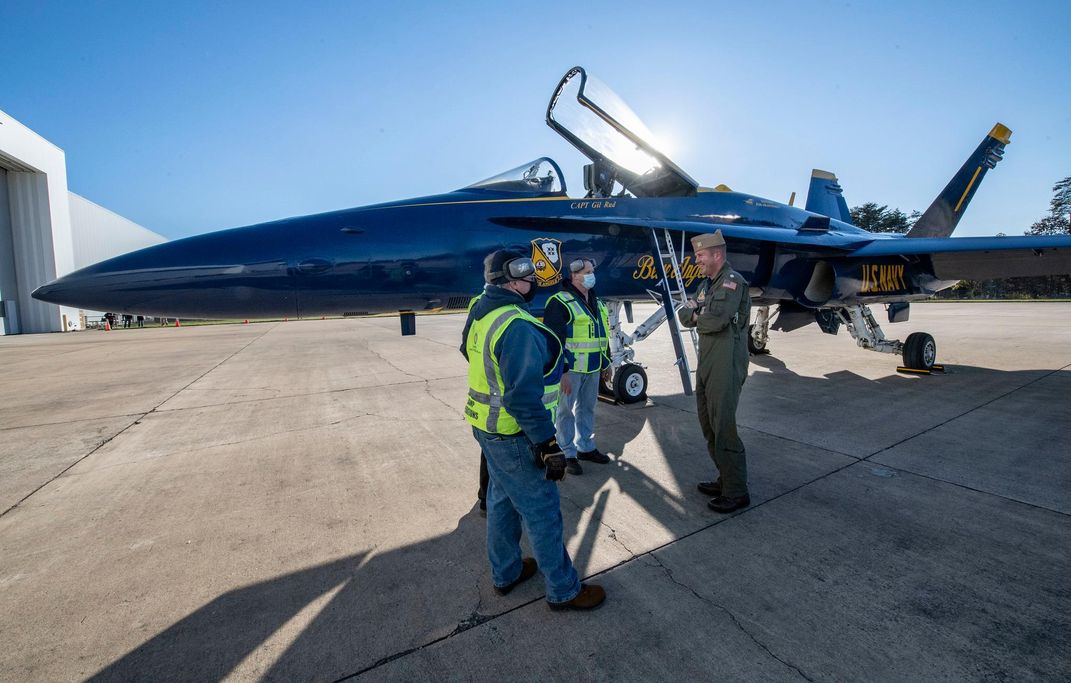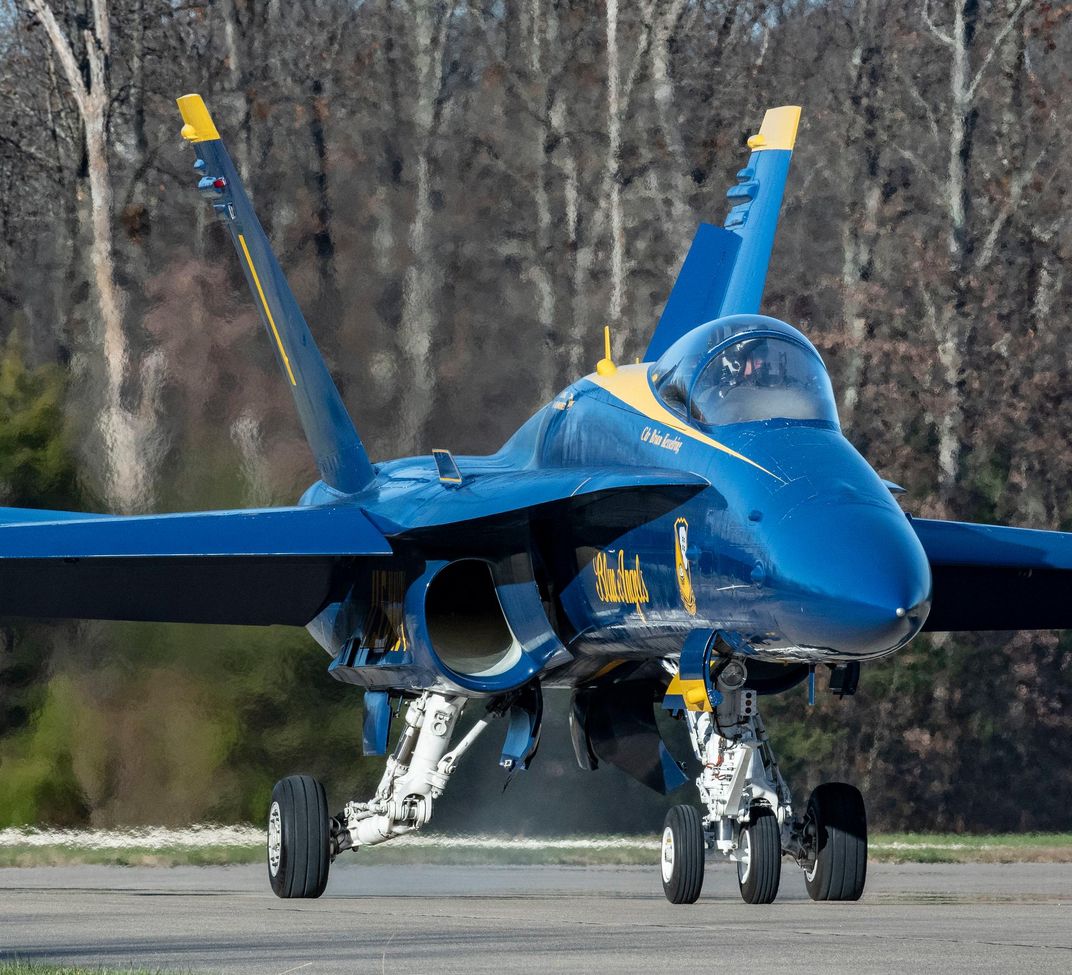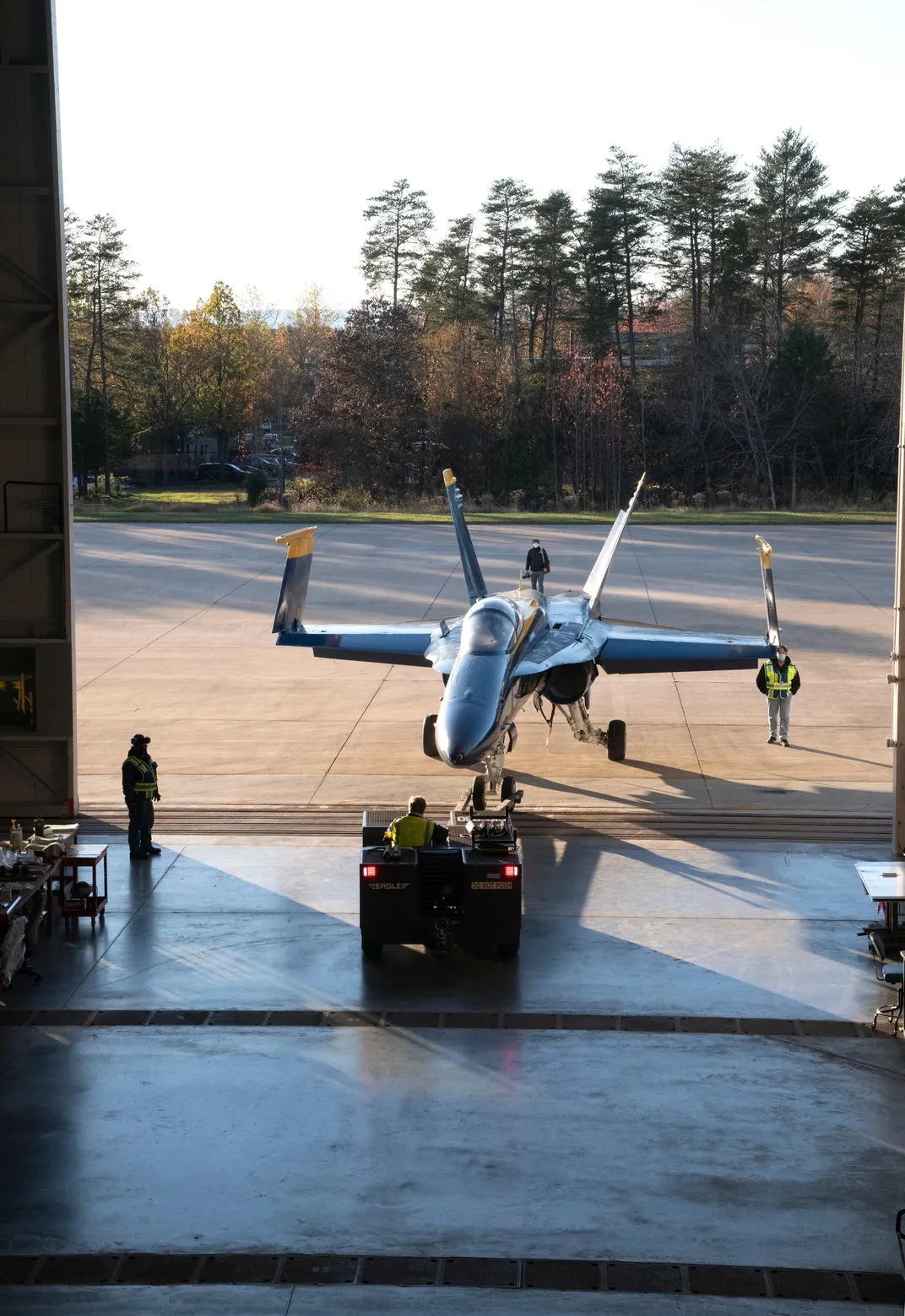The National Air and Space Museum Gets Its First F/A-18 Fighter
A Hornet comes to Hazy.
:focal(565x594:566x595)/https://tf-cmsv2-smithsonianmag-media.s3.amazonaws.com/filer/25/5a/255a2e3f-0dce-49af-9088-ccffdeb3a96e/50618888841_2578e60915_k.jpg)
Exactly two weeks after the F/A-18 made its final flight with the Blue Angels U.S. Navy demo team, one of the vaunted jets has arrived at the Smithsonian. The Hornet, the National Air and Space Museum’s first, will soon go on display at the Steven F. Udvar-Hazy Center in Virginia, which was recently closed to the public because of increasing cases of COVID-19 in the Washington, D.C. region. Commander Frank Weisser of the Blue Angels flew the airplane into nearby Dulles Airport on Wednesday, then taxied over to the Museum for the formal delivery.
The Blues are giving up their legacy Hornets—they’ll switch to larger and more advanced Super Hornets for next year’s show season—but the F/A-18 is still in service with the U.S. Navy and Marine Corps after more than 30 years as a stalwart of naval aviation. The unusual split designation (F stands for Fighter and A for Attack) signals the multiple roles Hornets have played from the start. The jobs have only grown over the years to include everything from aerial combat to reconnaissance.
“Flexibility” is in fact the word Larry Burke, Curator of U.S. Naval Aviation at the Museum, uses to sum up the airplane’s contribution to military aviation. For Navy pilots it was a key part of the transition from old-style dials and gauges to modern glass cockpits and head-up displays. “The advance in electronics let the same radar system serve both the anti-aircraft role and precision ground attack—just by flipping a switch,” Burke says.
While F-14 Tomcats had primary responsibility for defending a carrier fleet, especially at long range, Hornets could supplement that by providing a second, closer-in layer of aerial defense. The Hornet could also pinch hit for the Tomcat in escorting strike missions. This kind of role-switching meant that “when the Navy was putting together a strike package, they could send out all F/A-18s” instead of a mix of fighters and attack aircraft, Burke says.
This particular Hornet was one of the first C models off the assembly line (A and C models are single-seat, while B’s and D’s have two seats). Its story is like the history of the overall F/A-18 program writ small. The aircraft’s first assignment, from 1987 to 1993, was with Strike Fighter Squadron VFA-86, the “Sidewinders,” based out of Naval Air Station Cecil Field in Florida, during which time the squadron saw action in the Gulf War. The Hornet then spent four years with VFA-83, based out of Naval Air Station Oceana in Virginia, on missions to the Mediterranean, Adriatic, and Persian Gulf. Then it was out to Naval Air Station Lemoore, California, with another fighter squadron, VFA-115, followed by stints with two Hornet training squadrons, VFA-125 and VFA-106. In 2007-2008, it spent nine months assigned to VFA-136, the “Knighthawks,” which included combat operations in Iraq and Afghanistan. It served with two more fighter squadrons, VFA-146 and VFA-122, before joining the Blue Angels fleet in 2015.
After the Museum’s new acquisition is drained of fuel, “de-militarized” and otherwise prepared for public display, it will be placed on the huge exhibit floor at Hazy, not far from its Navy companion (competitor?), the F-14 Tomcat. The Hornet will keep its Blue Angels paint job, rather than being restored to the way it looked as a combat aircraft.
As for Commander Weisser, he may have arrived Wednesday afternoon in an F/A-18, but he had to fly home commercial. A bittersweet parting to be sure.




